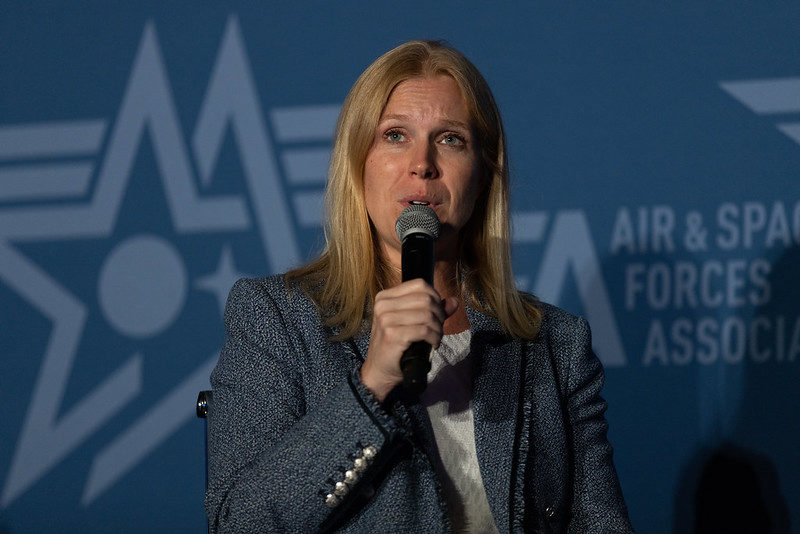The Department of the Air Force’s chief information officer offered glimpses into a future with “intelligent warfare” during a webinar Nov. 30 hosted by the Mitchell Institute for Aerospace Studies.
Lauren Barrett Knausenberger said she expects “information to be front and center for any future battles.”
Beyond simply “informationized warfare,” with its universal digital connectivity and plentiful computing power, “intelligent warfare” goes further, as Knausenberger describes it, incorporating artificial intelligence to create a “converged battle space.”
Carrying out “informationized warfare,” to begin with, “means you have to do a lot of things really well to have the information that you need,” Knausenberger said.
“You have to have connectivity. You have to have ‘compute’ [computing power] wherever you need it. And networks—you have to be able to get data from anywhere to anywhere. You have to have software that makes it easy for a warfighter to interpret that picture and to make a decision.”
Such “ubiquitous connectivity,” for one, may be “very close,” Knausenberger said, with the addition of more mobile and space-based connections—“where maybe we don’t have to carry around quite as much gear as we used to, to just get a connection.”
Adding AI to achieve intelligent warfare will involve “basic automations all the way through neural networks, deep learning,” she said, with the expectation that in the future, AI will be a part of all of the Defense Department’s weapon platforms.
But while AI is already commonplace in everyday life, that’s just not yet the case in the DOD, “and part of that is because it’s a lot easier to do AI at scale when you are already in the cloud,” Knausenberger said: “You already have really clean training quality data that you’ve been collecting across a large populous legally for decades.”
The department hasn’t yet incorporated AI consistently into its existing “20-year-old platforms,” though “some of them we have, and so I’d say that we are on the right path. We still have some work to do both in the lab and on the battlefield.”
The real “game-changing effect” of intelligent warfare, she said, comes into play “when you have a convergence of a number of different things.” Zero-trust IT architecture and the joint all-domain command and control concept qualify as “big convergence things.”
The DAF’s and DOD’s zero-trust implementation plans are already converging, she said of strategy to make IT infrastructure more secure, “and we’re actually making decisions together across the entirety of zero trust.”
In the long run, the vision is one of automation and intuitive interfaces—“that when you show up and you need to put in place that war-fighting effect, that you’re not trying to figure out a complex system to do it,” Knausenberger said. “You have the data at your fingertips. You make the decisions that you need to. … Once you make a decision, it’s going to be relatively automated in being able to carry out exactly what you expect it to carry out.”
